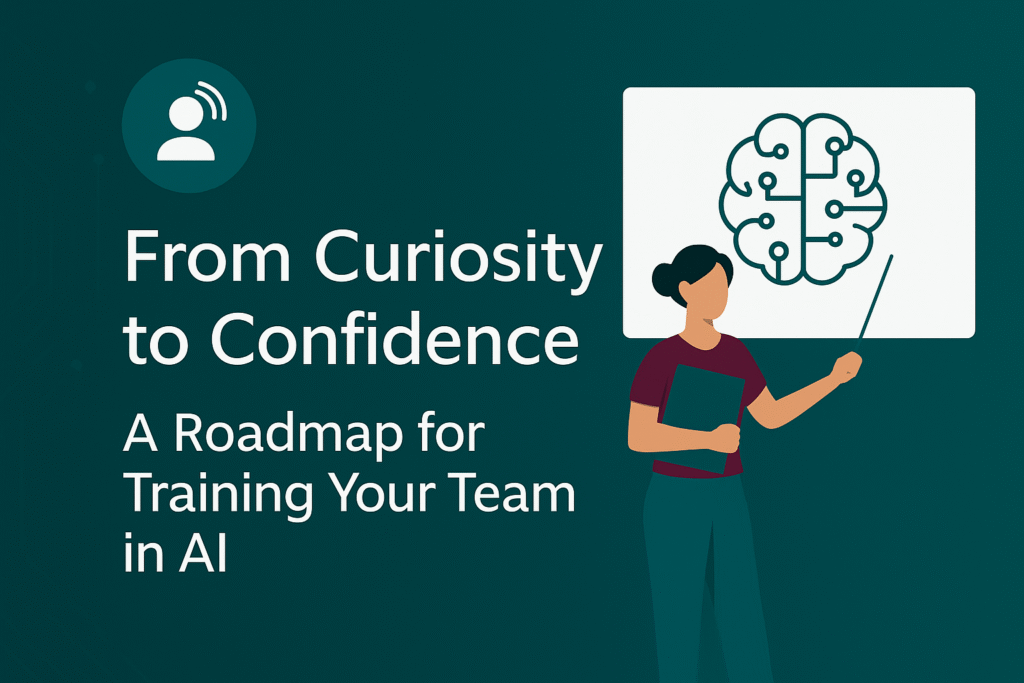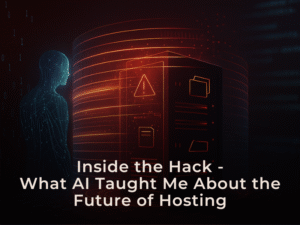Artificial intelligence isn’t just a buzzword anymore. It’s quickly becoming a daily reality for businesses of all sizes. While large enterprises may have entire departments dedicated to AI adoption, most small and medium-sized enterprises (SMEs) are still standing at the edge of the water.
They’re curious, watching from the sidelines, and wondering: How do we bring AI into our workplace without risk? How do we make sure it helps, not hurts, our teams?
The truth is, many employees are already experimenting with AI. Tools like ChatGPT, Copilot, and other built-in assistants are being used in offices everywhere. But curiosity-driven use is very different from structured, safe adoption. Without guidance, businesses risk security issues, wasted spend, and team resistance.
That’s where training comes in. Done right, it can transform curiosity into confidence and set your organisation on the path to smarter, safer growth.
Here’s a simple roadmap for SME leaders who want to move their teams from AI beginners to confident adopters.
Step 1: Start With Understanding, Not Tools
Too often, AI adoption begins with a list of apps to install or subscriptions to buy. But the real starting point is understanding.
Your team needs to know what AI is, what it isn’t, and most importantly, how it fits into your industry. A strong foundation prevents misconceptions and helps your people see AI as a partner, not a threat.
In training sessions, this means beginning with:
- A clear explanation of AI’s role in today’s business environment.
- Real-world examples of AI use cases in SMEs.
- A conversation about the limits of AI, so expectations are set early.
When people understand AI in context, they approach it with openness instead of fear.
Step 2: Address the Fears Upfront
Resistance is normal. Most SME leaders hear the same objections again and again:
- “Will AI take my job?”
- “Is this secure?”
- “What if we spend money and it doesn’t work?”
The fastest way to build trust is to bring these fears into the open. Training should show that:
- AI automates repetitive tasks so staff can focus on higher-value work.
- Safe usage policies and governance reduce security risks.
- Piloting small, tailored use cases avoids wasted spend.
Once fears are acknowledged, employees can shift from defensiveness to curiosity.
Step 3: Explore the Tools Already in Use
Chances are, your team is already dabbling with AI. Someone is using ChatGPT to draft emails. Someone else has Copilot helping with spreadsheets.
Instead of ignoring this, make it the starting point. Map what’s already in use and then show how structured training makes those tools more effective and safer.
For example:
- Teach staff how to write better prompts for ChatGPT.
- Explain how to handle sensitive data responsibly.
- Share real examples of how other SMEs are using the same tools.
Meeting people where they already are is one of the fastest ways to build adoption momentum.
Step 4: Move Into Hands-On Training
Understanding AI is one thing. Using it confidently is another. That’s why guided practice is essential.
At IPGN Solutions, our training sessions combine theory with hands-on experience. A typical full-day workshop might look like this:
Morning Session: Introduction to AI
- Understanding AI and its role in business
- Exploring today’s most useful AI tools
- Crafting effective prompts for maximum productivity
Afternoon Session: Leveraging AI for Business
- Implementing AI in real-world business applications
- Preparing and cleaning data for AI systems
- Strategies for integrating AI into workflows safely and effectively
Hands-on practice builds confidence faster than any amount of reading or theory. By the end of a session, staff can see for themselves how AI supports their daily work.
Step 5: Build Confidence With Real Business Cases
Generic AI training isn’t enough. SMEs need to see how AI applies directly to their workflows.
For example, AI can:
- Qualify leads before sales calls.
- Summarise meetings and generate follow-up tasks.
- Automate customer support FAQs.
- Speed up reporting and analytics.
When employees see how AI saves them time and reduces repetitive work, the “what’s in it for me?” question is answered. That’s where curiosity turns into confidence.
Step 6: Provide Ongoing Support
Adoption doesn’t happen in a single day. Confidence comes with ongoing reinforcement.
The most successful training programmes include:
- Onboarding — structured support when new tools are introduced.
- Documentation — easy-to-follow guides tailored to your systems.
- Follow-up support — Q&A sessions, refresher workshops, or office hours.
This isn’t about overwhelming teams with “AI everywhere.” It’s about sustainable, step-by-step integration that sticks.
Conclusion: Don’t Let Curiosity Become Paralysis
AI is here to stay. The longer SMEs wait to adopt it, the bigger the competitive gap becomes.
The good news? Adoption doesn’t have to be scary. With the right training, your team can move from curious experimentation to confident, secure use of AI in their daily work.
At IPGN Solutions, we offer tailored AI training for SMEs, from full-day office workshops to bite-sized lunch & learn sessions designed around your specific needs.





